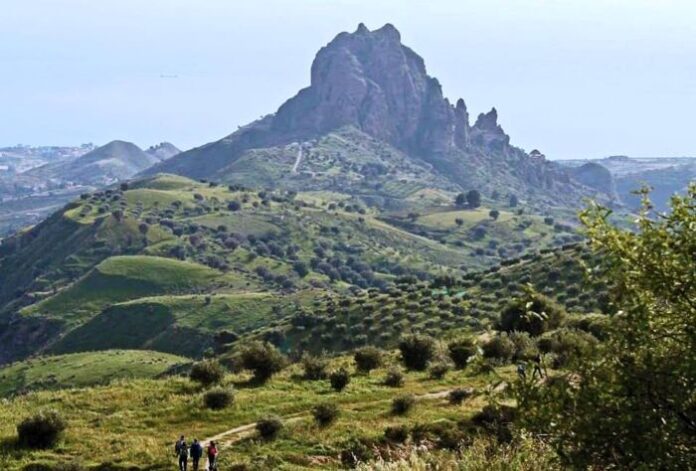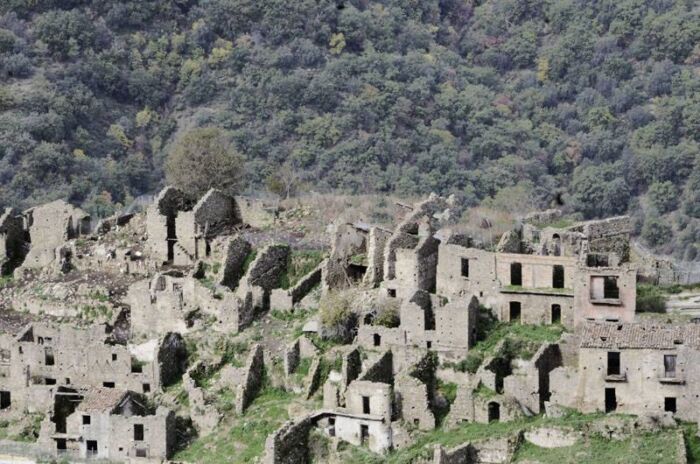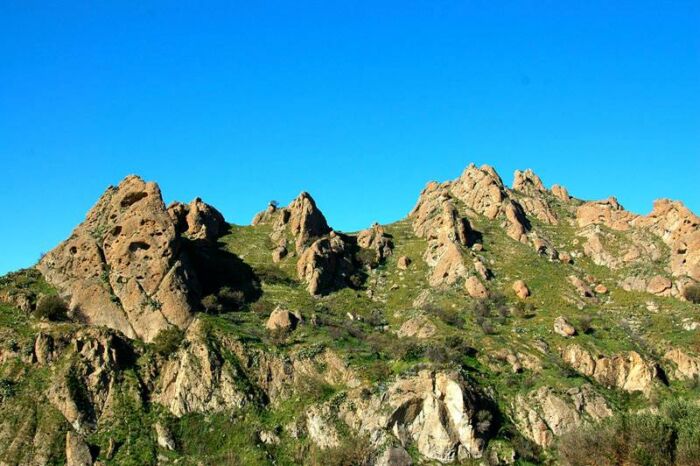
Between the 1980s and 1990s the Aspromonte Hikers Group (GEA) created this path, consisting of 9 stages, for a length of about 140 kilometers and a journey time of 9-10 days. The name of the Way derives from the historical road which, in past centuries, was used by brigands, such as Nino Martino, Giuseppe Musolino and others.
The route can also be undertaken for only a few stages and can be traveled on foot, on horseback or by mountain-bike; always accessible at low altitudes, it can safely be traveled at high altitudes from spring to autumn.
The first stop is Gambarie, a mountain resort located 35 kilometers from Reggio Calabria. Along this route you will come across the natural beauty of the “Rumia” lake, in the famous Monument of Nino Martino (a natural set of overlapping rocks placed randomly one on top of the other, which tradition wants to be piled up to cover the brigand’s body by his companions or by the wayfarers in memory of the hero) and the Cippo di Garibaldi, a majestic tree with a hollow where Garibaldi was placed to rest after the injury to his leg.
Continuing through woods, dirt roads and panoramic points, you reach Zervò where you can see an important site of our most recent history, the anti-tuberculary sanatorium, inaugurated in 1929 and abandoned after about three years of activity due to the severe winter weather conditions of the place and for logistical problems. In the 90s, after the restoration, it hosted the Community Meeting of Don Gelmini.
The third stage, characterized by streams, dense woods and pine forests, reserves a small pearl of history for the traveler: the Zillastro cross. A commemorative plaque commemorates the battle of September 8, 1943 between the Italian troops of the Nembo Battalion, about 400 men, and the Canadian troops of the Nova Scotia and Edmonton regiments, about 5000 men. Unaware that the armistice had been signed on September 3, the VIII Battalion Nembo decided to attack in order not to surrender; many died, 57 were taken prisoner and only very few survivors arrived in the town of Platì, where they learned of the armistice.
The area of the Zomaro, a place rich in spring waters, tells with its fortifications, presumably of Roman age, a very ancient history; between 72 and 71 AD in this area the Roman proconsul Marco Licinio Crasso and the rebel Spartacus fought strenuously.

At the Passo della Limina the Aspromonte finds its end and starts the Serre; near the pass are the village Limina with its church of Maria SS. dell’Assunta and the ancient path of the Greeks, where you can reach the sanctuary of San Nicodemo on foot. The village, now completely uninhabited, was built in the 1950s to house farmers who had lost their homes due to the floods of 1951.
After a journey through dirt roads, chestnut woods and wooden bridges over the rivers, you reach Fabrizia, a place of lumberjacks and charcoal burners and summer residence of the Prince of Roccella Fabrizio Carafa. Due to the earthquake of 1783, the whole territory had an economic collapse, from which it recovered only with the advent of the French dominion and thanks to the presence of the Royal Ironworks, built during the Bourbon dominion and empowered by the French, in the territory of Mongiana . The Regie Ferriere were closed in 1881 and today, with the attached museum, they are an unparalleled example of industrial archeology.
Of similar importance is the steel park of Chiesa Vecchia, established in 2016; here what remains of the ancient mining village is preserved: the seventeenth-century administrative building, the furnace of the factory, the eighteenth-century church. Nothing remains of the workers’ houses, which were made of wood.
It extends immediately after Ferdinandea, a territory covered by beech and fir woods of 3600 hectares of the Calabrian greenhouses which extends in the municipalities of Stilo, Bivongi, Brognaturo, Mongiana and Serra San Bruno. The hunting lodge, the ironworks, the barracks, the stables, the church and many other buildings are preserved from the urban complex of Ferdinandea, built by Ferdinando di Borbone. A combination of hunting lodge and ironworks, the complex enjoyed the proximity of the woods, from which it obtained wood and coal.

Among the artistic and historical beauties of the area we cannot fail to mention the rock sanctuary of Santa Maria della Stella in Pazzano, the Orthodox monastery of San Giovanni Theristis in Bivongi and the spectacular Cattolica di Stilo, founded between the end of the 10th and early 11th century according to the Byzantine model of the “quincunx” churches.
Last stop is the Certosa di Serra San Bruno, the first Carthusian monastery in Italy with a thousand-year history, having been founded in 1090 by Bruno of Cologne.
At the various reception facilities along the way it is possible to request the Carta del Camminante, where your name and surname, the place of departure and arrival and the way of travel (on foot, on horseback or by mountain bike) will be written . By requesting it at the time of departure and showing the stamped Walker’s Card, you can also request the Certificate.
A journey steeped in nature and through the history of the area that is worth trying.



































